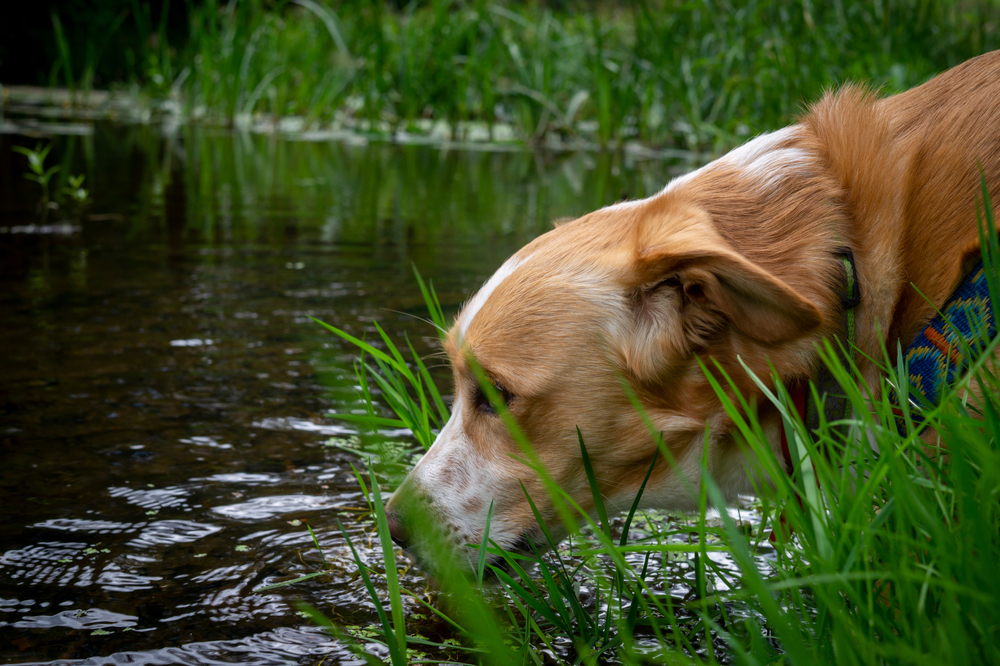Giardiasis, also known as beaver fever, is caused by a microscopic parasite found worldwide that can cause significant health issues for your pet. Our Marcy Veterinary Clinic team knows that parasitic diseases are concerning, and we offer information about giardiasis, plus tips to help decrease your pet’s risk.
Giardia basics
Giardia are single-celled microscopic organisms that live in mammalian intestines, including humans and pets. They use whip-like tentacles, called flagella, to move from place to place, and they attach to their host’s intestine with a structure similar to a suction cup. The Giardia life cycle consists of two forms:
- Trophozoite — The trophozoite form, which is the parasitic stage, lives in the host, feeding from the intestinal wall.
- Cyst — The trophozoite approaches the colon and can form a cyst that is passed in feces and can survive in the environment. This is the contagious stage.
The cysts can live outside the host’s body in water and soil for months, as long as conditions are relatively cool and wet. Another host who consumes a cyst digests the cyst’s hard outer shell and releases a trophozoite. In the parasitic trophozoite form, the Giardia chooses an attachment area depending on the host species and the host’s diet.
Giardia transmission in pets
Pets become infected by ingesting a Giardia cyst in the environment when they drink water contaminated by feces, or eat contaminated grass or objects or contaminated small animals. Pets tend to be indiscriminate when they choose what they put in their mouth, which makes Giardia infection a real concern.
Giardiasis signs in pets
Some pets who have a giardiasis infection exhibit no signs, but can still pass contagious cysts in their feces. When signs are present, they typically include watery diarrhea, vomiting, excess foul-smelling gas, inappetence, and lethargy. The parasite seems to interfere with the intestinal absorption of vitamins and other nutrients, leading to diarrhea. Why some pets get diarrhea while others are unaffected is unclear.
Giardiasis diagnosis in pets
After infection, Giardia takes 5 to 12 days in dogs and 5 to 16 days in cats before the organism can be found in the feces. Diarrhea can precede Giardia shedding, complicating the diagnosis. Potential diagnostics include:
- History — Our team takes a thorough history. Questions we may ask include:
- Could your pet have ingested a toxin?
- Is your pet up to date on their vaccines?
- Could your pet have ingested a foreign body?
- How long has your pet exhibited signs?
- Has your pet been exposed to another sick pet?
- Physical examination — Our team examines your pet from nose to tail, evaluating their hydration status and checking for abdominal pain.
- Blood work — We perform a complete blood count (CBC) and biochemistry profile to evaluate your pet’s overall health and rule out other conditions.
- Parvovirus — Depending on your pet’s age and vaccination status, we may recommend a test to rule out parvovirus.
- Fecal test — We may run an enzyme-linked immunosorbent assay (ELISA) to specifically test for Giardia.
Giardiasis treatment in pets

Diarrhea and vomiting are typically observed in pets affected by giardiasis. These GI disturbances typically lead to dehydration, so most pets who exhibit giardiasis signs need fluids to replace their deficits and a prescription for an antibiotic and anti-parasitic combination that will eradicate the infection. Additional medications and supportive care may be necessary, depending on your pet’s condition, as well as multiple rechecks to ensure your pet has cleared the infection. If you have other household pets, ask our veterinary team if they should be treated as a preventive measure. You should also bathe your pet to remove infective cysts from their coat, and thoroughly clean their environment with disinfectants (e.g., quaternary ammonia compounds).
Giardiasis in humans
While Giardia can be transmitted from pets to humans, most humans are infected by drinking contaminated water. Children and immunodeficient people are at highest risk. If your pet tests positive for Giardia, wear gloves when you clean up after them and wash your hands thoroughly after handling.
Giardiasis prevention in pets
Tips to help prevent Giardia infection in your furry pal include:
- Scheduling regular wellness examinations — We perform a fecal check during your pet’s annual wellness examination to help identify issues such as giardiasis.
- Packing water — Pack bottled water and a portable water bowl when you go outdoors, so your pet doesn’t drink from potentially contaminated water sources.
- Preventing hunting — Don’t allow your pet to hunt and eat wild animals.
- Avoiding infection sources — Don’t allow your pet to contact other pets’ fecal matter.
Giardiasis is a concerning disease, but you can take steps to decrease your pet’s risk. If your pet has diarrhea, contact our Marcy Veterinary Clinic team so we can determine if they have a Giardia infection and begin treatment.








Leave A Comment